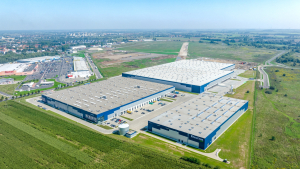
Western Europe has been witnessing several city-in-the-city concepts and CEE is following suit. There are good examples across the continent but this special type of development needs meticulous preparation and high-class execution. Property Forum asked Zoltán Petrik, Head of Sales and Real Estate Development at EB Hungary Invest Ltd. about the most important challenges of preparing and materialising such complex projects.
What are the most attractive points of a city-in-the-city concept for developers?
Developers being active in this specific field must elaborate a concept to be able to bear the risk of the size itself. By doing so, the configuration of the most liveable and financially stable tenant and/or end-user mix is a crucial stage of the process, which might lead to a genuine vaporization of the obvious risks, arising not only from the scale of such projects but also form many other factors one might encounter—local aspects, issues deriving from geopolitics, etc. All of these are resulting in a quite unusual professional challenge one has to face in case thinking and investing on such a scale.
What are the most challenging parts?
First, I would say the size. Yes, the size, as this determines how you establish the concept; how you elaborate the right and well-balanced timing and financing – avoiding detrimental investment gaps; legal and environmental circumstances being valid for this magnitude, the list is quite long.
How can a developer identify the right mix of commercial and public components?
I guess the list of those who did it perfectly right is quite short – nevertheless, there are a visible number of projects around the globe where everything went well from the concept until the long-term management of the venue or the exit itself. Professional preparation is crucial. Find the time to investigate urban and social texture, analyse and possibly understand best practices, and find the right agencies – knowing it better.
Unlike in Asia, Europe has several local administrative restrictions. How can the projects be adjusted to those restrictions?
I would formulate this a bit differently: administrative tools are there to be understood and used in practice properly. I wouldn’t call them restrictions; I see them much more like a frame you have to consider while you paint your dreams. In Europe, you might need more time to give life to such a development, but in case you follow the entire procedure properly, and you understand the real aim behind the thinking of local authorities – you are deemed to be successful.
How about the current financial environment of these large-scale projects?
The financial environment of such a project is called: time. You need to have patient financing. It has to be able to cope with possible inflation and larger changes in the spending power of your local target groups (even if you look for global visibility as well). It has to be stable enough to deal with several excursions within various sectors having an impact on your project like interest rates and construction costs, just to mention 2 of them.
Investors would only prefer ESG-ready components in these developments. How do they put pressure on stakeholders to fulfil all requirements?
ESG is ESG. Simple as that. There will always be guidelines and policies one has not only to consider and/or to comply with, but to follow them as well. In this case, one shall be able to transform these requirements into possibilities. A „City in the City” cannot be a „village in a village”. It must live, and live properly, in a genuine way. Think about your body. That is the route to follow! Of course, financing follows ESG these days, so, at the end of the day, you make your own life easier.
Can we say that a complex large-scale regeneration project, extended with several commercial elements, may also create a new district?
We can, but weak, inadequate concepts won't live in the long term. There is a real potential for slumming, segregation, and blocking social mobility - emptying it, and, at the end of the day you just regenerate the cycle on and on.
You have to do it wisely. Spend time understanding local paths. Spend visible time with that. This will show you what your creation at the end of the day will represent. If you’re doing it well, if you are open to understanding, it might result in a new district as well, yes.
Can it be a better way instead of a city-in-the-city concept?
Difficult question. You see, such several users (office workers, inhabitants, tourists, people looking to find shopping opportunities, etc.) put a significant load on the infrastructure. If basic services cannot be arranged locally that will extend this burden to the closer/wider surrounding which usually is already overloaded. All needed infrastructural developments cannot be let out of a similar endeavour, you have to think the „whole line” through, and, in advance as well. A single kindergarten for 25 kids won’t do the job.
Schools, medical infrastructure, public administration utilities, even the placement of retail opportunities, etc. The list is long. We’ve seen good examples as well as weaker ones as well – just like when talking about the financing of such a project: time will tell you to understand time in advance.
If realised, what are the major impacts of these concepts on the local real estate market?
If properly realised, the impacts are wide and long-lasting. Are they changing the face of the welcoming city? Yes. Being an „add-on factor” for it? Hopefully! The office market will change, and the division of what is CBD and what is not might also be re-structured. The residential market will have an additional position in the search engines of the different agencies. Real estate funds will knock on your door? Yes.
The list is long. …and we didn’t even touch issues like the creation of new places, and, sometimes, cultural impacts are also mentioned. This is not a simple real estate operation. This is creation.



